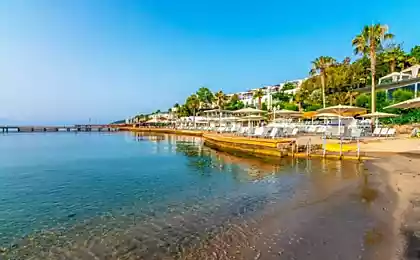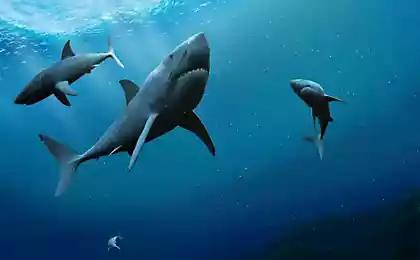1880
Tourists in Turkey hinder sharks breed

In late May, just before the summer holidays on the beaches of Turkey suddenly raided trouble - in the news reports about the appearance of sharks and shameful flight of tourists from the beaches of Marmaris and Bodrum. And now, a deadly predator celebrate victory in the coastal waters of Turkey, the beaches are closed, boat trips canceled and travelers run straight to the offices of travel agencies, requiring termination of contracts or, in extreme cases, the exchange of Marmaris to Antalya.
The second wave of all the media have been reporting that there were no sharks near the Turkish coast No beaches are clean and ready to receive Russian tourists, and no one ever marine predators in the Mediterranean and in the eyes have never seen and never heard of in fairy tales.
It is clear that when there are two such conflicting information that something is wrong. Either alone or other mistakes, wishful thinking, and often both sides something wrong. The truth is somewhere nearby. Like sharks.
What turned out to be really?
Near the town of Mugla on the west coast of Turkey, in the tens of kilometers from Marmaris, there Gokova Bay, where every year from May to August swim shark family Sandbar (Carcharhinus plumbeus, sandbar shark), to breed. That no one prevented them from multiplying, the local authorities have set up special signs asking not to disturb the shark boats and boats. This year, the ubiquitous tourists reached the bay of Gokova and raised a stir all over the west coast of Turkey, hence the news about bloodthirsty predators on the Turkish resorts walk in the light.
It turned out as in the famous parable of the shepherd and the wolf - the alarm raised in vain. Sandbar sharks, they are also sand shark danger to persons not present. Gray-brown, 2, 5-meter predator eat fish, stingrays, small sharks, cephalopods and shrimps. They prefer to inhabit coastal areas - bays, creeks, estuaries, reefs and avoiding the surf zone. By surface approach also does not like. So to meet with them to tourists on the beach is not threatened.
In another place travelers need to fear a meeting with lightning murderers with impenetrable skin, and several hundreds of sharp teeth.
According to experts, most of the meeting of man with sharks occur off the coast of Australia, with the majority of shark attacks recorded on the east coast of the continent, while more deaths in the south.
Among the most dangerous as the number coast of Florida - Beach New Smyma Beach leads the list, the California coast - the beach Bolinas, Hawaii - Maui and Oahu. In hot lists "Shark" also includes bay beaches Kosi Bay, Gansbaai and KwaZulu-Natal in South Africa, Tiger Beach in the Bahamas and the beaches of Recife in Brazil. In 2007, shark attacks were noted coastal waters of Fiji, Mexico and New Zealand.
Scientists from the University of Florida, who monitor the interaction of sharks and humans in nature, estimated that in 2007 shark attacks on people frequent. For the year, it was noted 71 attack, while in 2006 there were 63. If you look at the statistics of deaths, it becomes clear that in the early years of the XXI century shark attack resulted in the death of a person is only 7, 6%, while in the last decade of the XX century, this figure reached 12, 3%. This is due primarily to the best work of rescue and medical services, and more - greater consciousness and awareness of swimmers, sailors and fishermen. According to the same data, shark attack surfers prefer - 56% of the attack was carried out on them. Another 38% came from swimmers, and 6% - for scuba divers and snorkellers.
Scientists from the Florida explained that the activity of sharks off the coast of Mexico, where over the past few weeks, killing two people, can be caused by the phenomenon of "La Niña", shifted the boundary between cold and warm water closer to the shore. Fish migrated, and behind them and headed shark.
Shame host Ferrari (2 photos)
Somali pirates demand $ 1 1 million ransom for the release of Russians




















